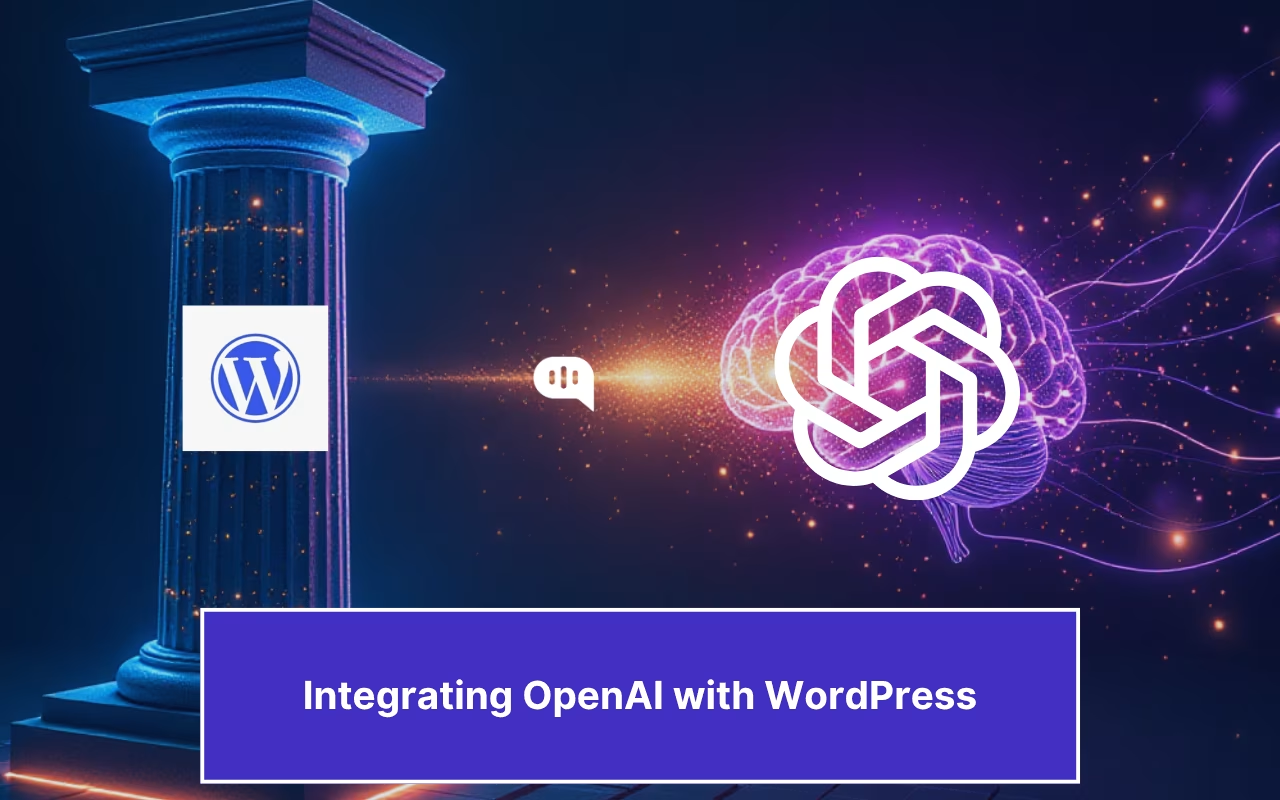Updated on April 17, 2025
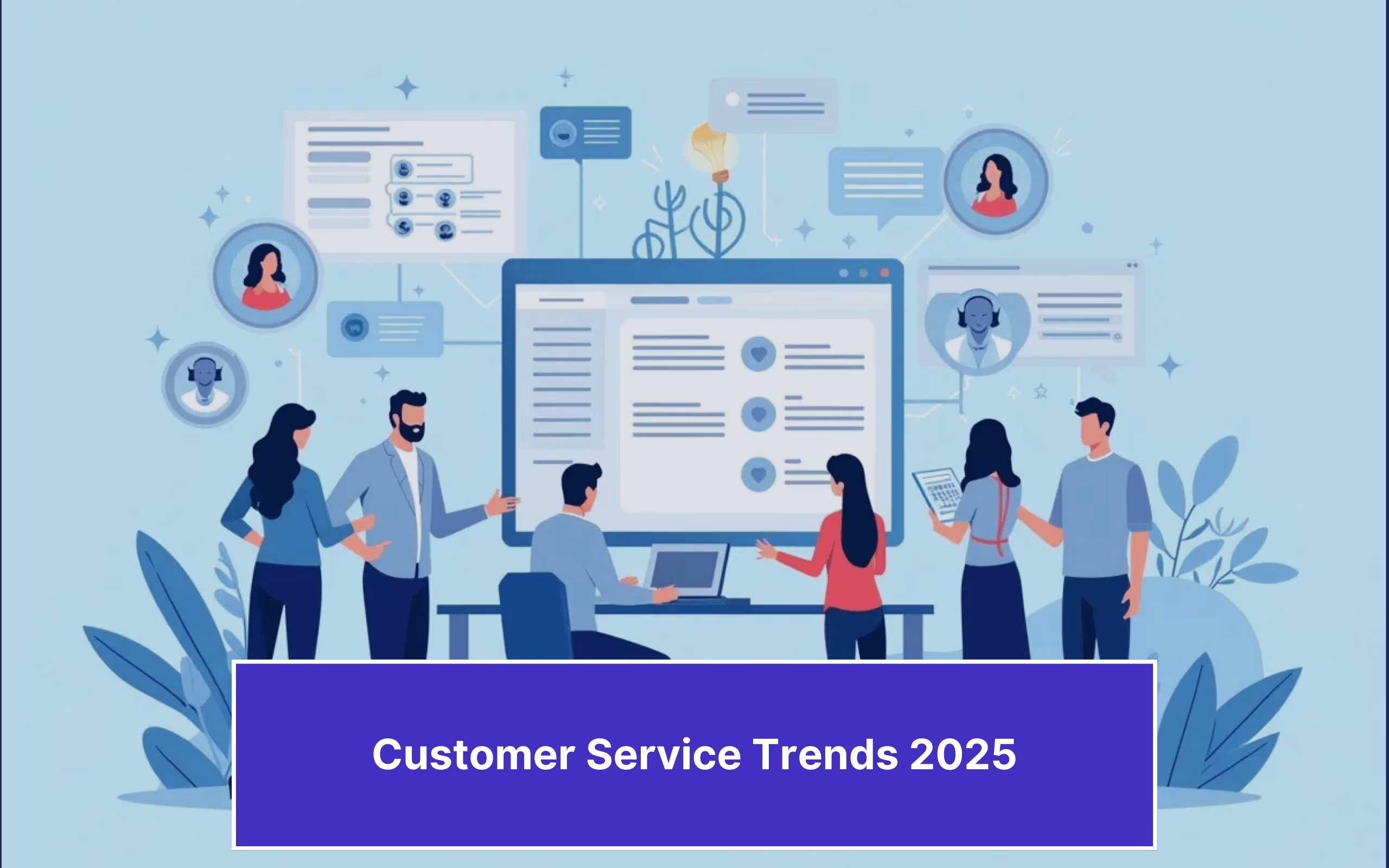
In 2021, 80% of customers reported having had a bad customer service experience. This is happening at a time when 93% of customer service leaders agree that customer expectations have increased more than ever before.
When these two facts are combined, you can start understanding the pressure on customer service teams as they move into 2025. Of course, this is happening with the rise of new technologies (We’ve covered Claude 3.5 Sonnet and o1 in this blog) and an overhaul of the customer service paradigm (67% of customers prefer self-service over speaking to a company employee).
In light of the changes and expectations, customer service teams are adopting new technologies and processes to gain momentum in 2025. In this article, we’re going to talk about these processes and technologies in-depth; we’ll cover:
- Proactive Customer Support will Become a Necessity
- Agentic AI will Rise and Align with Human Needs
- Omnichannel will Rule Again
- Wide-Scale Personalization at Low Cost
- Advanced AI with Human Empathy will be Needed
- Data Security and Privacy will be More Important than Ever
- More Insights into Customer Journeys will be Available
- Real-Time Customer Insights Will Create Feedback Loops
- Continuous Employee Training will be in Focus
- Companies will Focus on Education & Capacity Building
- More Technology to Guide Budgeting and Purchasing
- Clean Data will be Key to AI Advances and Training

1. Proactive Customer Support will Become a Necessity
In an early 2024 interview, Priscilla Ng, the Group Chief Customer and Marketing Officer of Prudential, outlined her vision for the multinational company. She said, “When I observe the most successful companies worldwide, I find that their primary objective is to maximize value for the customer. This means ensuring customer satisfaction, loyalty, and advocacy, which leads to repurchases and referrals. It forms a strong value chain in which happy customers translate into happy investors.”

Over the years, a lot of companies have followed suit. And this trend is all set to gain more momentum in 2025, backed by the wealth of data AI systems can provide on the customer journey.
As Priscilla points out in the interview, “Looking ahead, creating great customer experiences requires data-driven decision making, such as understanding and optimizing communications. By analyzing data on customer behavior, such as drop-off points or time spent on a page, we can identify and address any issues. This highlights the importance of data in our operations. Ownership and proper use of data will be a powerful factor in winning the hearts of customers.”
With AI systems now able to analyze a lot of data at once and prepare succinct notes, human and AI agents have the knowledge and data to provide proactive customer care. Now, they can recall customer purchases, behavior, and decisions by clicking a button. This will create a system where proactive customer service is not just a combative advantage in the market but a necessity.
Another thing that will help customer service be proactive is the rise of agentic AI.
2. Agentic AI will Rise and Align with Human Needs
Let’s explore this theme of proactiveness a bit more by examining the trend of AI agents.
Enver Cetin, an AI expert at Ciklum, says, “You can define agentic AI with one word: proactiveness. It refers to AI systems and models that can act autonomously to achieve goals without the need for constant human guidance.”
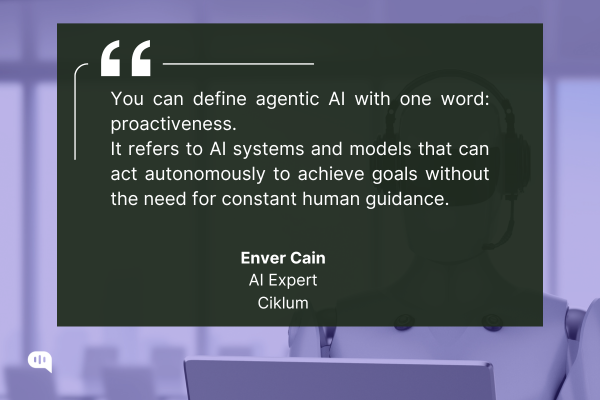
We’ve written about AI agents for customer service before and pointed out how vital they were to the changing landscape. In 2024, several models showed agentic capabilities (The new Claude 3.5 Sonnet could use a user’s computer to perform actions).
These agentic abilities are set to improve with newer models in 2025. Also, given the way the capabilities of AI agents have evolved, they will be available over more channels than ever.
This is reaffirmed by the fact that AI agents have shown an impressive growth rate of 44.8% CAGR. As Craig S Smith, an NYT writer who covers AI, points out in Forbes, “If the tidal wave of investment in generative AI chatbots is any clue, this might well be the future of customer service. The sector is evolving so quickly that it’s trying to outrun decades of bad press.
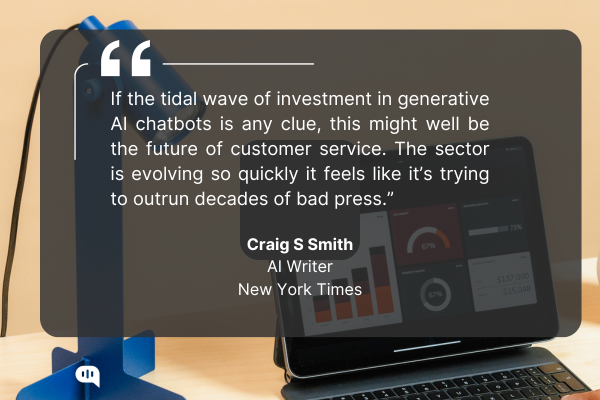
This trend will march on in 2025, with more enterprises adopting AI agents as a de facto part of the customer service function. As we explained, this will also be advanced to multiple channels.
3. Omnichannel will Rule Again
We confess that this is a repetitive trend you can quote for any year. Omnichannel messaging has been part and parcel of company communications for years now.
However, 2024 has brought in increased expectations of omnichannel communications with it.

67% of customers now find it convenient to seek customer service over social media, and 76% want replies within a day. This means more people will want to close the loop and offer resolutions on the customer’s preferred platforms.
While this might seem trivial, it has been a longstanding problem in customer service. Primarily because old technological stacks did not allow proper ticketing and resolution on social media platforms. However, with AI ticketing and more pointed skill-based triage, omnichannel processes will become easier and more standardized across enterprise companies.
One of the reasons why this will be easier will be the rise of AI-powered personalized at a low cost.
4. Wide-Scale Personalization at Low Cost
You can now use Google’s Gemini APIs for free, albeit with low rate limits. This is an emerging trend in AI, where more and more tools are being made available at incredibly low costs to add innovation.
This translates to more small and mid-size companies having wide-scale access to AI. And with AI comes personalization. As Myles Suer, a Digital and CIO Analyst at CMS Wire, points out, “Those who invest in predictive analytics, agile processes, and AI-driven personalization will not only stay ahead but redefine what exceptional digital experiences look like.”
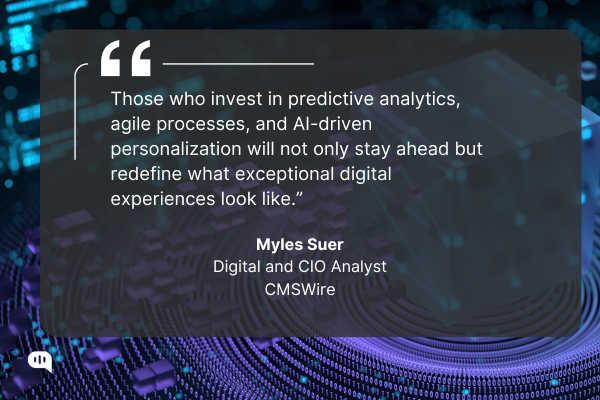
AI will drive personalization at scale and will be much cheaper. This will enable wide-scale deployments and experiments as people scale their businesses.
Plus, frontier AI models will become much cheaper to train if the Deepseek v3 announcement is anything to go by. This will enable the introduction of newer and more affordable models into the marketplace, helping companies pursue personalization.
It might enable the creation of a type of AI that customer service agents have been clamoring for the past two years: an empathic one.
5. Advanced AI with Human Empathy Will be Needed
AI companies have started creating more and more empathetic models to capitalize on customer service opportunities. A neuroscience research paper from early 2024 pointed out that people felt understood and heard when an AI replied to their messages (rather than an untrained human).
Yidan Yi, an Assistant Professor in the Department of Management and Organization at the Smeal College of Business at Penn State University, says, “AI was better at using emotional support strategies shown in prior research to be empathetic and validating.”
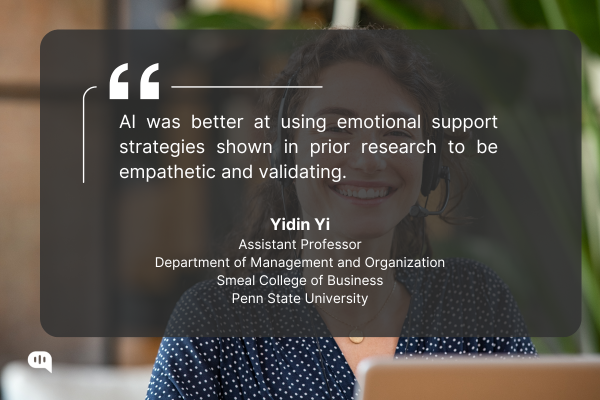
Empathy is one of the most prominent traits that people look for in customer service representatives. So, it’s heartening to learn that AI can already perform at the level of junior customer service representatives.
This capability will expand as AI models evolve and incorporate new information. We will see more empathetic AI at the forefront of customer service. While this AI won’t offer the same empathy as an experienced customer service agent, it will provide frontline service and answer repetitive questions.
This would allow more experienced agents to build more lasting customer relationships. These extended relationships will also facilitate faster and more proactive service delivery.
Customer trust is more important than ever, so customer service agents must also focus on data security.
6. Data Security and Privacy will be More Important Than Ever
One of the side effects of AI has been the realization that our data is increasingly available for tech companies to use. As Dan Benjamin, the head of data, identity, and security at Palo Alto Networks, points out, “The largest concern of organizations using and hosting AI applications is ‘how do we govern the data. How do we ensure the AI model will not read data that it shouldn’t? And how do we ensure the AI model will not get trained on data that it shouldn’t? How do we ensure it doesn’t spit out data that it shouldn’t? AI security is becoming a data security problem.”

The solution for customer service teams lies in data ownership. Customer service teams need to work with product and tech teams to create data practices that protect customers’ personal data at scale.
As JD Denning, CISO at FS-ISAC, says, “It is crucial for organizations to foster a culture that prioritizes cybersecurity. Employees at all levels should be actively involved in the process since those who lack awareness or fail to follow secure practices can inadvertently expose critical data.”

Investing in compliance initiatives with certifications (ISO, HIPAA, etc) and an organization-wide data safety culture will be necessary for the next leg of customer service. After all, as we will explain, we will have more data available than ever before.
7. More Insights into Customer Journeys will be Available
Data collection is changing. The customer journey will become more complex as Google begins phasing out third-party cookies.
However, conversational AI agents at any corner and advanced analytics features will provide more insights into the customer journey than ever. According to recent research from Deloitte, businesses that adopt AI-powered customer journeys as the norm will be able to get higher conversion rates.
Add this insight to the fact that AI can be used to perform large-scale sentiment analysis, and you can understand why customer journeys will be more transparent in 2025.
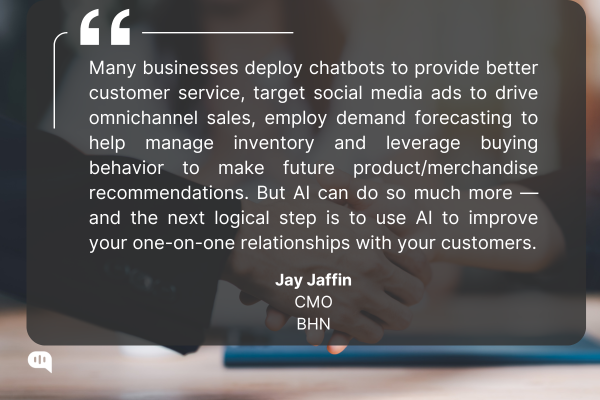
As Jay Jaffin, the CMO at BlackHawks Network, points out, “Many businesses deploy chatbots to provide better customer service, target social media ads to drive omnichannel sales, employ demand forecasting to help manage inventory and leverage buying behavior to make future product/merchandise recommendations. But AI can do so much more — and the next logical step is to use AI to improve your one-on-one relationships with your customers.”
Companies will absorb these data points into their workflows over the next few years. This will also improve analytics and change how we perform service delivery itself.
8. Real-Time Customer Insights Will Create Feedback Loops
As customer journeys become more transparent, more positive feedback loops will be created across the journey. For example, you suddenly get many customer support requests about payment errors. AI can inform you of this pattern, and your technical team can quickly deploy a bug fix to fix the problem before it spreads.
These insights will improve engagement (understanding how each button influences the customer journey will help UI designers create better designs) and improve the overall performance of your products and services.
Pattern recognition and optimization will become more ingrained into customer service workflows, and more people will use these signals to provide proactive customer service.
Of course, to take full advantage of this, employees would need continuous training.
9. Continuous Employee Training will be in Focus
90% of the employees who have received AI training reported better performance. Conversely, over half of the companies using AI have provided no additional training to their employees for these tools.
However, as AI becomes more enterprise-friendly, this will change. This is evidenced by JP Morgan’s AI-forward employee training initiative. Mary Erdoes, the firm’s head of asset and wealth management, said, “This year, everyone coming in here will have prompt engineering training to prepare them for the AI of the future.”
Several leaders say this training will help employees understand how AI will augment their workflows. It will also help employees understand that AI is not a threat and allow the company to adopt the tools faster.
To add to this continuous employee training trend, we’ve also noticed rising educational and capacity-building initiatives among companies.

10. Companies will Focus on Education and Capacity Building
2023 and 2024, in part, were driven by the rapid advancement of AI technology. This has meant that more companies have invested in AI without exploiting it for maximum efficiency. This is partly because businesses increasingly realize that optimizing AI use requires new skills.
As Suzanne Steele, the VP and MD of UKI, Middle-East, and Africa from Adobe, says, “Coming into 2025, organizations will need to turn their attentions to enablement and education, ensuring everyone across the business – from users to leadership and advisory boards – understands not just how AI and generative AI should be used to boost productivity and enhance the customer experience, but also where the guardrails are to ensure responsible and appropriate use.”

Microsoft has already invested billions into improving AI infrastructure and upskilling employees. Companies like Ikea, MasterCard, and S&P Global have also launched AI upskilling programs for their employees.
This trend should continue strong into 2025 as AI becomes more of a necessity across enterprise companies.
AI will also influence the customer service products that companies build.
11. More Technology to Guide Budgeting and Purchasing
While AI might have seen a veritable boom over the past 4-5 years, the same hasn’t been confirmed for the larger economy. The McKinsey report for the 2024 holiday season says, “The data indicates that although consumers are feeling more optimistic about the economy, the increase in confidence is not reflected in their intent to spend.”
This challenge would be met by spending on customer support software focusing on budget-sensitive product recommendations and help. According to Jessica Sunderland, the director of the Amazon Business Unit at Kepler, the focus is to simplify customer experiences and focus on helping them make the right decisions with AI.
Since consumer spending has taken a hit over the past few years, brands will shift to technologies that help their customers spend less and gain more.
This trend will partially be fueled by the data they gain on customer sentiments and behaviors, which our final trend will influence.
12. Clean Data will be Key to AI Advances and Training
As AI practitioners, much of our time is spent advocating for clean data for AI training. As we move into 2025, this clean data will not only be an advantage localized to a few data-aware enterprise companies but an actual necessity.
Here, customer service teams will become the data silos, and they’d feed data about customer behavior and sentiment to the entire organization and the AI they’re training.
One of the key challenges in knowledge management has been the ad-hoc nature of customer service work across organizations. However, AI and more straightforward workflows will facilitate the availability of much of that data for every division in the company.
This should help businesses create better conversational agents for their customers and improve the entire industry’s customer-centricity.
We’ve talked about how organizing your help desk software increases the efficiency of AI training. This type of organization will be the key to overall organizational efficiency.
Here’s a quick video on customer service trends for 2025.
Conclusion
2024 was a year of mixed results for most businesses. While consumer spending dipped because of the global economic conditions, many companies focused on efficiency and profits, driven by the promise of AI.
So, we talked with our clients and friends across industries to understand how 2025 will shape customer service. And while most customer service executives will focus on further integration of AI into their systems, they will also focus on employee training.
AI adoption has been a clear trend across the past few years, and 2025 will be the year that adoption translates to organizational efficiency.
Talk to us if you want an agentic AI to help your business take the next step in AI efficiency!
As the Head of Growth, Marketing & Sales, Yogesh is a dynamic and results-driven leader with over 10+ years of experience in strategic marketing, sales, and business development.



